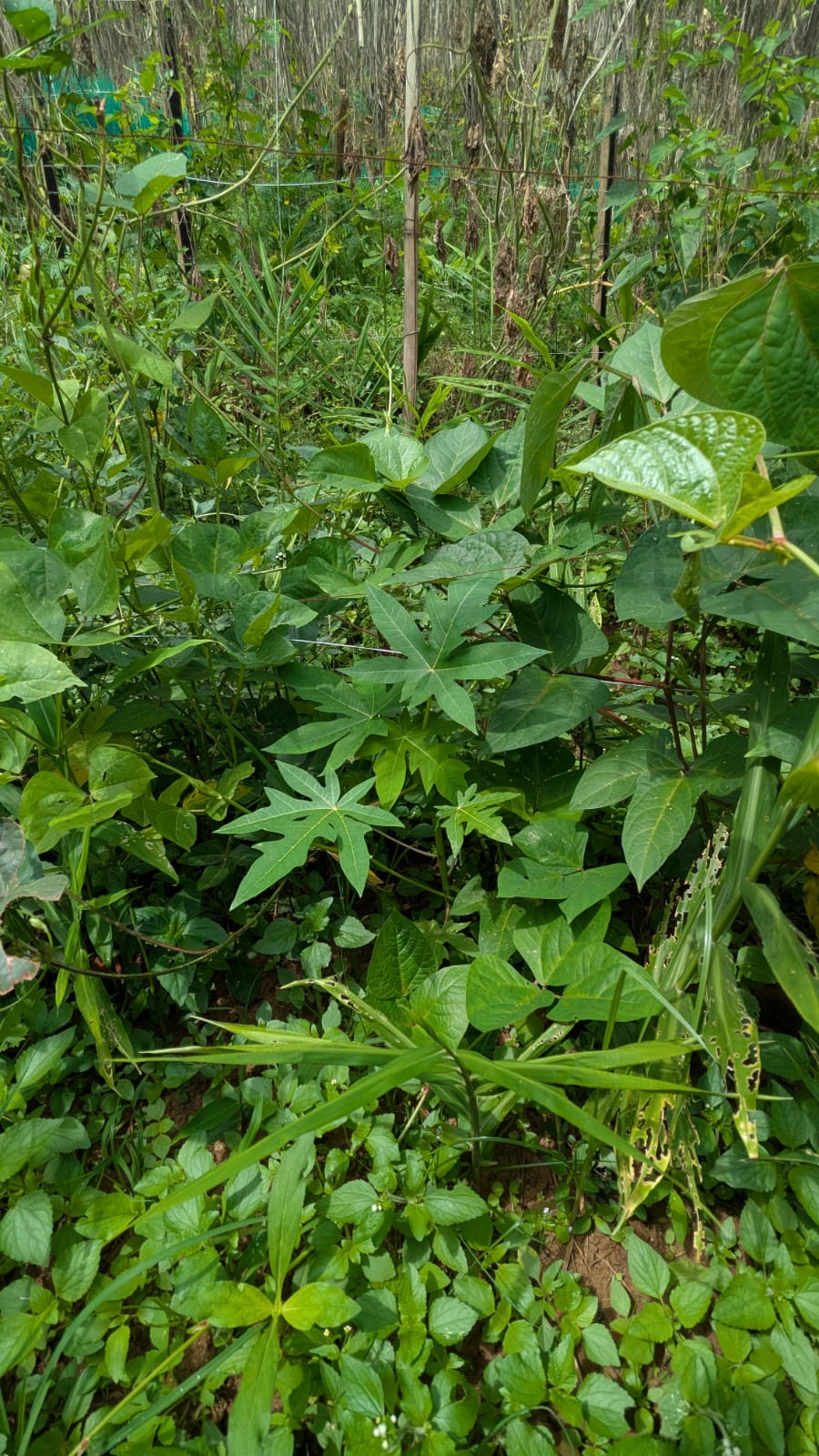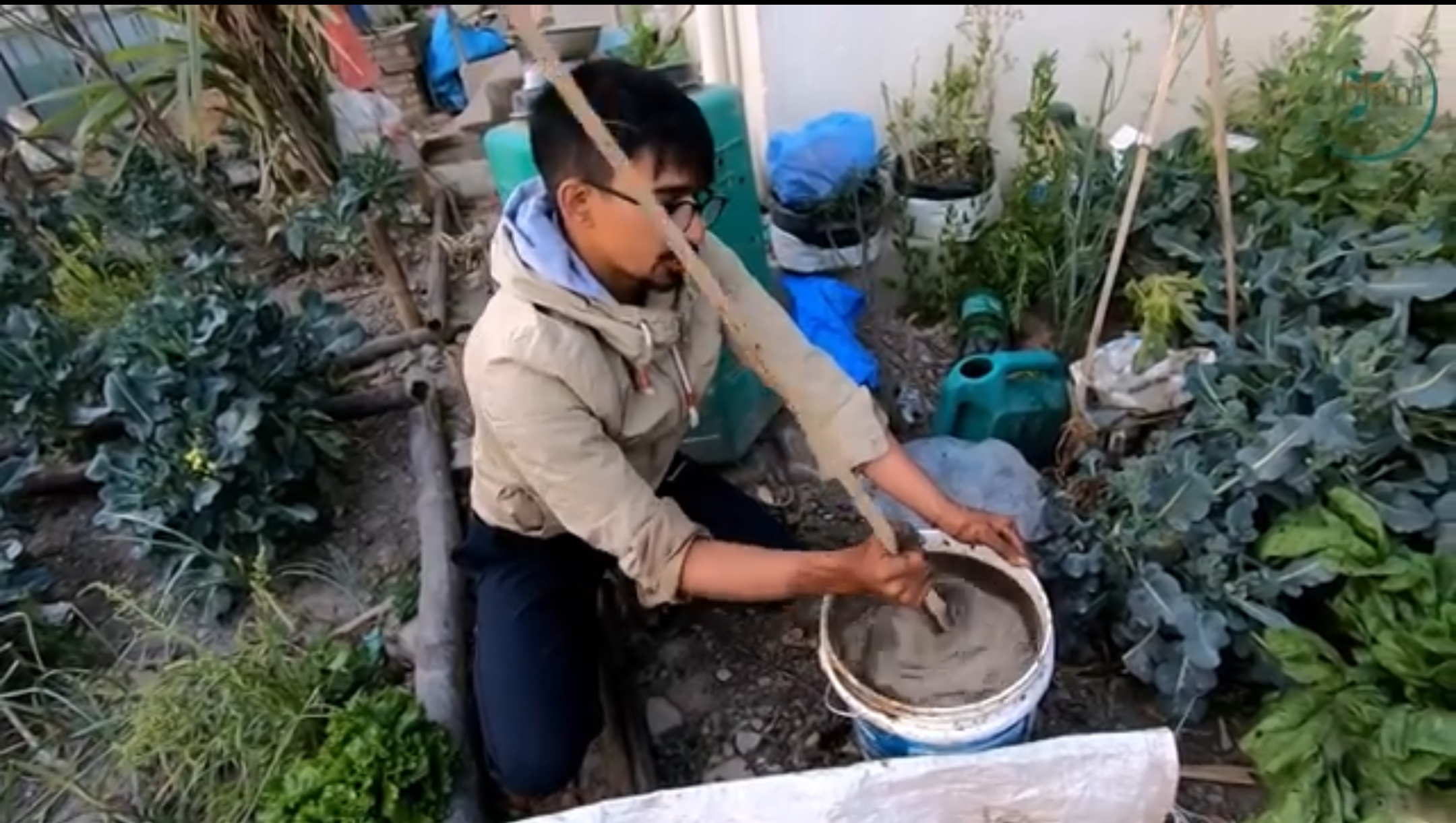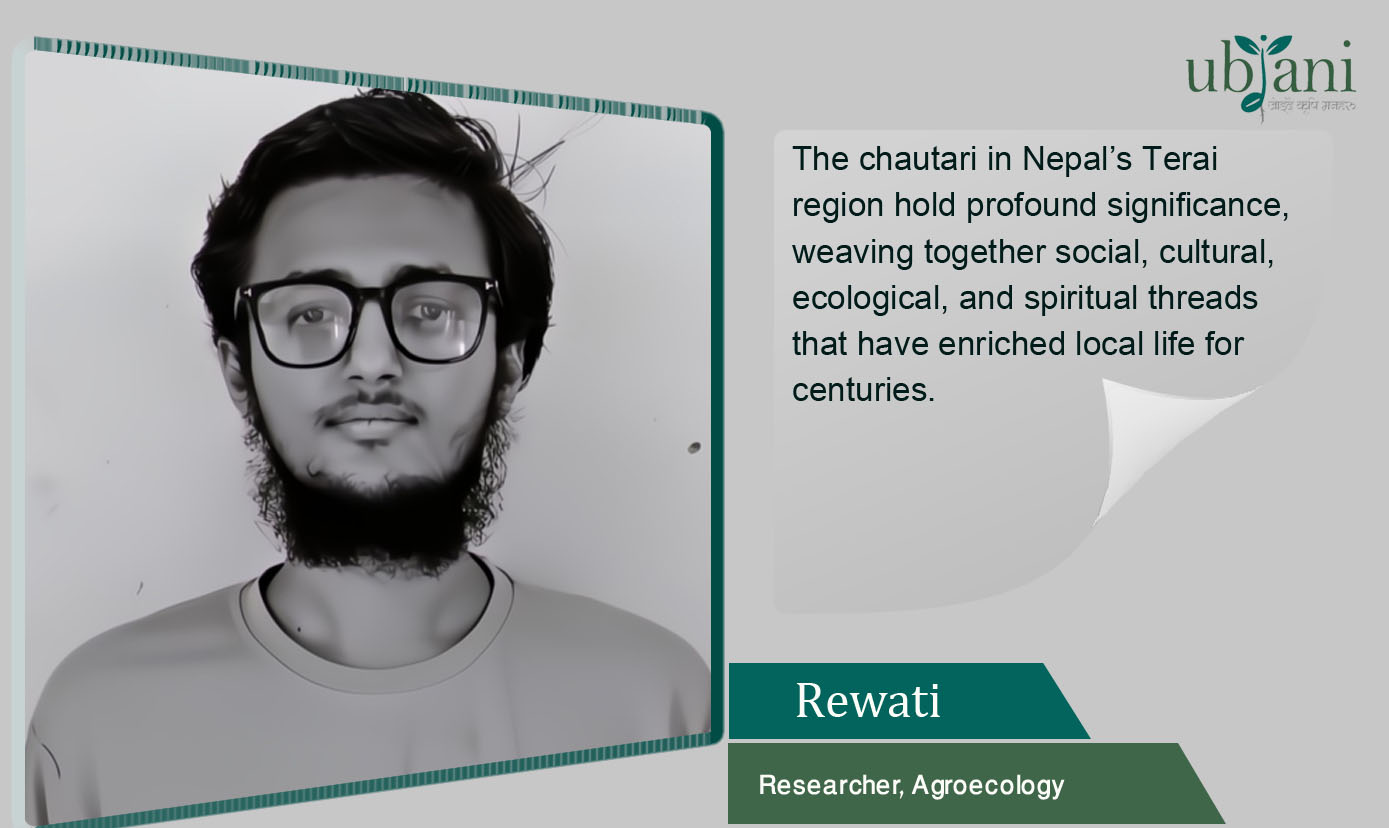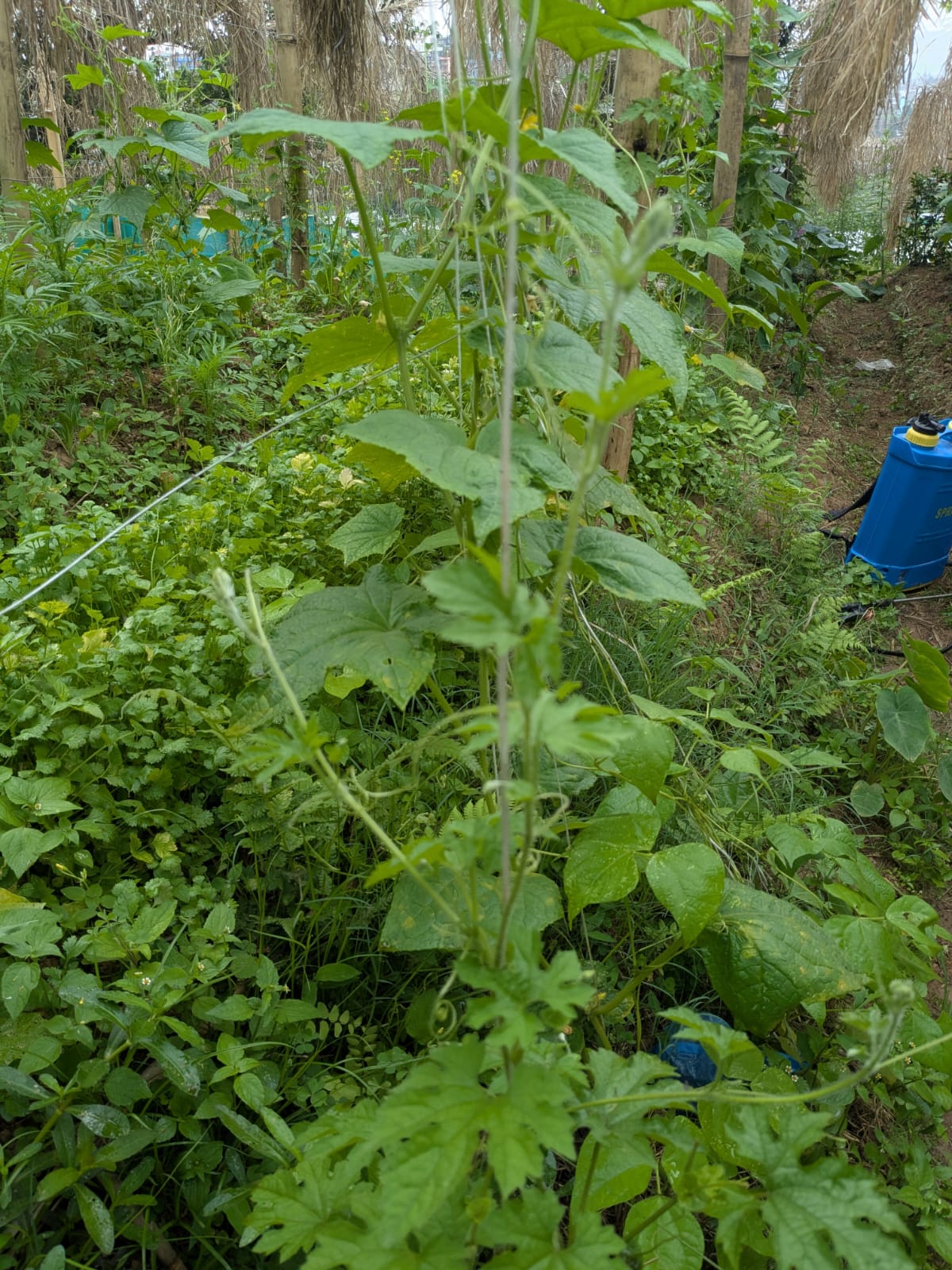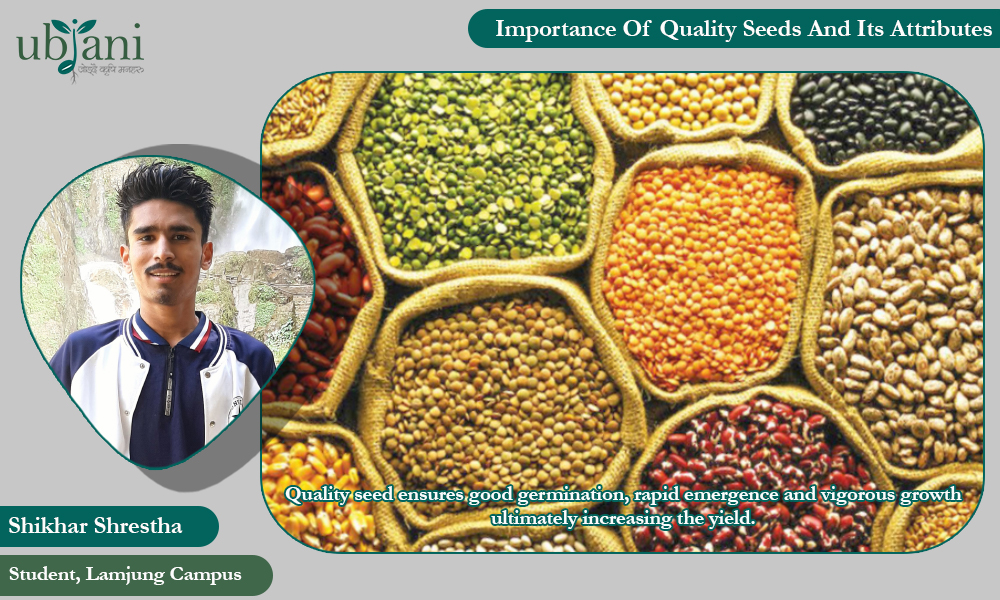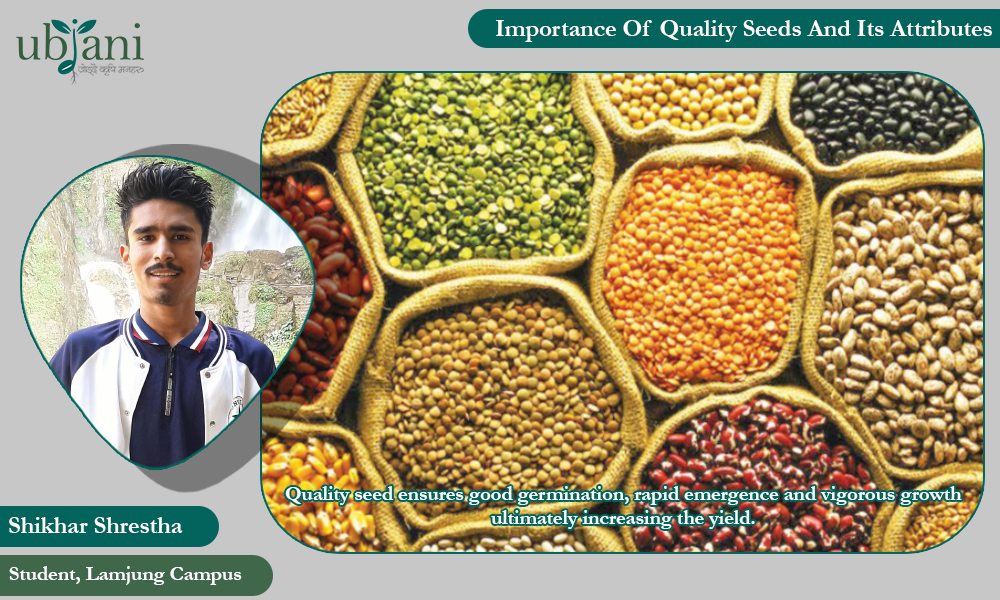
Quality seed is defined as varietally pure with a high germination percentage, free from disease and disease organisms, and with a proper moisture content and weight. Quality seed insures good germination, rapid emergence, and vigorous growth.
Importance
1. ensures genetic and physical purity of the crops.
2. Gives desired plant population.
3. High return per unit area as the genetic potentiality of the crop can be fully exploited.
4. Capacity to withstand the adverse conditions.
5. Seedlings produced will be more vigorous, fast growing and can resist pest and disease incidence to certain extent.
6. Ensures uniform growth and maturity.
7. Development of root system will be more efficient that aids absorption of nutrients efficiently and results in higher yield.
8.High produce value and marketability.
9.Easy handling in postharvest operation and yield prediction.
10. It will respond well to added fertilizer and other inputs.
11. Good quality seeds of improved varieties ensures higher yield at least by 10 – 12 %.
12. Minimize seedling rate and maximize seedling emergence.
Components/characters/attributes of quality seeds
Inferior quality in any one of the characteristics of seed may result in low yield and poor quality of the produce. The ultimate aim of seed certification and testing is to make available high quality seed and the indicators are as follows:
1. Analytical purity (Physical or mechanical purity): Analytical purity is the most important component of seed quality. It indicates how much of the seed material of the species named on the label is intact. It protects the farmers against the use of impure and adulterated seed having contamination of other crop species and inert matter etc. Analytical Purity has definite standards for various crop species, generally not less than 98%.
Higher physical purity for certification
Maize , Bhendi – 99%
All crops ( most) – 98%
Carrot – 95%
Sesame, soybean & jute – 97 %
Ground nut – 96 %
2. Genetical purity:
Breeder/nucleus: 100 %
Foundation seeds: 99.5%
Certified seeds varieties: 98%
Certified hybrid seeds:95%
Certified hybrid cotton: 90%
Certified hybrid castor: 85%
a. Species purity; It resembles analytical purity except for degree of admixture of other crop seeds like barley in wheat.
b. Varietal purity (cultivar purity): All field crop species have a number of varieties with different agronomic and botanic characteristics. Varietal purity refers to the genetic purity ascertained in the field, by examining growing plants, because as a general rule, varieties cannot be identified solely by examination of their seeds in the lab, comparison must be done with the pure variety in terms of distinct characteristics.
3. Germination capacity: The germination capacity indicates the potential of a seed lot to establish as seedlings under good field conditions. A lot with high purity will be of no use for sowing if the seeds are incapable of germinating and producing strong seedlings in the field. The germination capacity of a seed lot is the percentage by number of pure seeds, which produce normal seedlings in a laboratory test.
Germination capacity is the most important characters of a seed lot, so a seed lot with a higher germination capacity will always prove to establish more seedlings then the lot with a lower germination capacity.
4. Freedom from weeds: Weeds are a very serious problem of seed crops. So weed seeds are taken separately than other species. Weed seeds are present in almost all seed lots. There are some weeds that are very common and can be tolerated subject to the standards, but there are other weeds, which are noxious in nature and should be completely absent from the sowing seed.
Ex; loose smut of wheat (Ustilago tritici)
Kernal smut of sorghum (Sphacelotheca sorghi)
Grain smut of pearl millet (Tolyposporium penicillariae)
Ergot of bajra (Claviceps microcephala)
Early blight of tomato (Alternaria solani)
Little leaf of brinjal (Datura virus-2) etc.
5. Vigor; The germination capacity of a seed lot is the ability of producing normal seedlings under good field conditions, whereas the vigor represents its ability to do so under poor conditions. Seed lots with same germination capacity, especially with low percentage may perform differently under adverse or abnormal field conditions.
Generally, high germination capacity is associated with high vigor. There is no standard vigor test however; high germination capacity may be taken as a good indication of vigor. Therefore, high germination should be preferred while purchasing the seed for sowing.
6. Seed size: Large seed size is taken as indication of vigor. The seeds contain an embryo alone or with endosperm as reserved food for developing seedlings. The bigger the size of seed, the greater will be the size of seedling with larger leaf area for photosynthesis. Further, a large seed if sown deep into the soil has more chances to reach the surface then a smaller one.
In fact, it is not necessary that large seed size always produce higher yields. In wheat, it has been observed that plants from small seeds having similar populations and good field conditions can produce an equivalent yield of grain as large seeds. Seed size is expressed as the weight of a thousand seeds, 000 seed weight, or g/1000 seeds.
7. Moisture content: Moisture content is very important. It is the key factor in determining whether or not the seed will retain its germination from harvest to sowing time. Moisture can be determined in the laboratory. Moisture meters can help make quick on the spot assessment of moisture expressed as percentage by weight.
Optimum moisture content
Cereals: 10-12%
Pulses: 7-9%
Vegetables: 6-7%
Oilseeds: 5-6%
8. Homogeneity (Uniformity)
The seed lot must be homogenous for its components. Every seed lot may have some mixture of inert matter, other crop and weed seeds. To make the contents of a seed lot consistently uniform, it should be thoroughly blended and made homogeneous before packaged and marketed.
9. Health
Seed health is important in controlling certain diseases particularly the seed-borne diseases, where the infection is carried over from one year to the next by the seeds like cereal smut and bunt. It is possible to identify most of the pathogens in the laboratory. Seed-borne diseases can be controlled by chemical treatment of the seed. Nevertheless, it would always be a good policy to use seed harvested from healthy crops.


